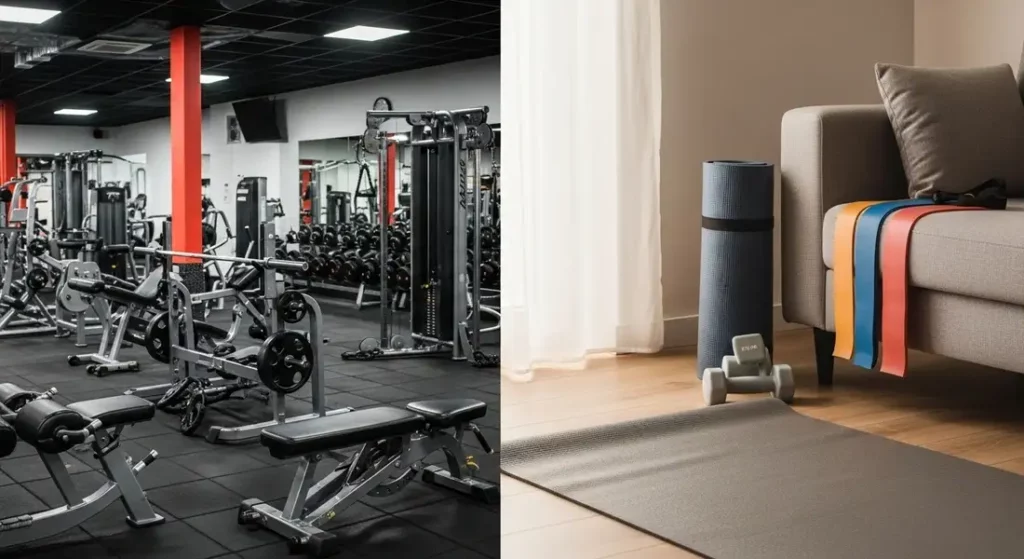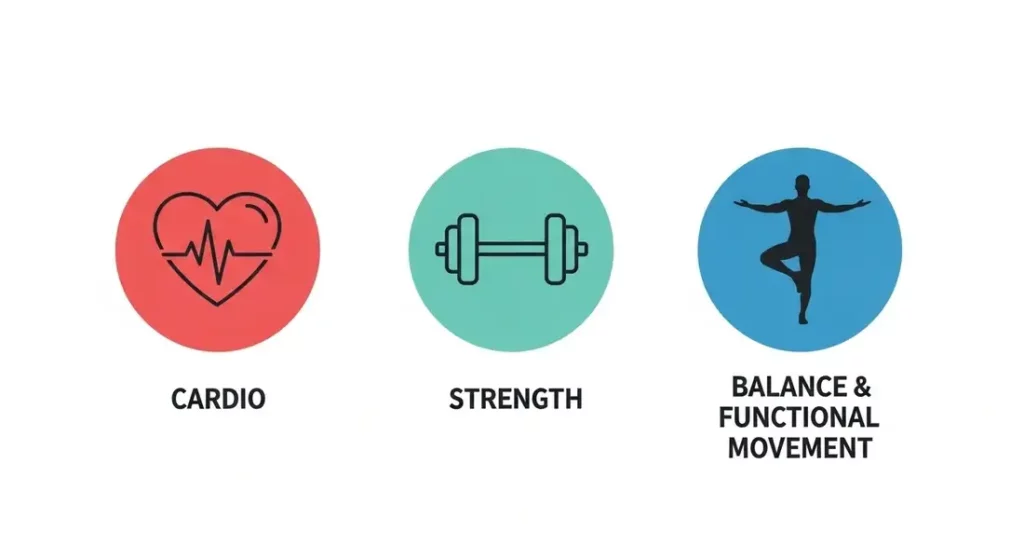Welcome to your starting line. If you’re here, you’ve decided to take a significant step towards a healthier life, and doing it from the comfort of your home is a powerful choice.
The world of weight loss is often cluttered with conflicting advice and intimidating expectations, leaving many beginners feeling lost before they even start.

This guide is designed to be your knowledgeable coach, cutting through the noise to provide a clear, sustainable path to achieving your goals.
This is the central hub for our Beginners Guide to Weight Loss at Home series.
Here, we will lay the foundational principles.
Each section will give you the core knowledge you need and then link you to a more in-depth guide on that specific topic.
Let’s build your foundation for lasting success.
Why Start at Home? The Power of Your Personal Space
Before we dive into the “how,” let’s acknowledge the “where.”

Choosing to begin your weight loss journey at home immediately removes common barriers like gym intimidation, travel time, and expensive memberships.
Your home is a private, convenient, and budget-friendly space where you can build confidence at your own pace.
This guide is built around the principle that you don’t need a fancy gym to achieve incredible results; you just need the right knowledge and a plan.
The Three Core Components of Fitness – Cardio, Strength, and Balance
When it comes to exercise for weight loss, a successful and sustainable plan is built on three core components.
Many beginners focus only on one, but integrating all three will deliver the best results, build a resilient body, and prevent injuries.

- Cardio: This is the engine of calorie burning. Activities that elevate your heart rate are fantastic for creating a calorie deficit and boosting heart health.
- Strength Training: This is how you build a stronger, more efficient metabolism. Building lean muscle increases the number of calories your body burns at rest.
- Balance & Functional Movement: This is the pillar that makes all other exercises safer and more effective. Functional fitness trains your muscles to handle everyday activities, improving stability and coordination, which is critical for preventing injuries.
Deep Dive: Cardio for Weight Loss – Best Home Equipment Options
Deep Dive: The Role of Strength Training in Weight Loss for Beginners
Related Reading: Unleash Your Inner Weight Loss Warrior: The Ultimate Guide To Cardio Vs. Strength Training
Fueling Your Body – Nutrition Is Not a Mystery

Exercise is crucial, but your results will be dramatically accelerated by what you eat.
You cannot out-train a poor diet.
The foundational principle of weight loss from a nutritional standpoint is creating a calorie deficit.
This simply means you consume slightly fewer calories than your body burns.
Disclaimer: Always consult with a healthcare professional or a registered dietitian before making significant changes to your diet.
Deep Dive: Creating a Calorie Deficit – Basic Nutrition Principles
Anticipating the Hurdles – The Mental Game of Weight Loss
Before you start any plan, it’s important to acknowledge that the journey won’t always be a straight line.
The biggest challenges are often mental, not physical.
Understanding them now prepares you for success.
- The Motivation Rollercoaster: Your motivation will come and go. This is normal. The secret is not to rely on motivation, but to build discipline and habits.
- The Trap of Perfectionism: You will miss a workout. You will have a meal that isn’t “perfect.” The key is not to let one small misstep derail your entire week.
- The Patience Problem: We live in a world of instant gratification, but healthy weight loss takes time. Trust the process, even when the results feel slow.
Each guide in this series will give you specific tools to overcome these and other challenges as they arise.
Putting It All Together – Your First Week
Knowledge is only powerful when put into action.
A structured plan prevents you from feeling overwhelmed.
Your goal isn’t to be perfect; it’s to be consistent.
A beginner’s plan should ease you into a routine, incorporating cardio, strength, and balance work for safety and functional fitness.
Here is a sample structure for your first week. Notice how balance and recovery are given their own dedicated time.
| Day | Activity | Focus |
| Monday | Cardio | 20-30 minutes (e.g., brisk walking, stationary bike) |
| Tuesday | Strength Training | Full Body Workout (bodyweight or light weights) |
| Wednesday | Active Recovery & Balance | 20 minutes of stretching & basic balance drills |
| Thursday | Cardio | 20-30 minutes (try a different activity) |
| Friday | Strength Training | Full Body Workout |
| Saturday | Active Recovery & Balance | Gentle Yoga or a long walk with core exercises |
| Sunday | Rest | Complete Rest Day |
Full Plan Here: Sample Beginner Workout Plan for Weight Loss (Using Home Equipment)
Related Reading: Ultimate 30-Minute Sandbag Circuit For Home Strength & Fat Loss
Related Reading: Improve Your Stability: An Introduction to Balance Equipment
Success You Can See and Feel – Tracking Progress
The number on the scale is only one small piece of the puzzle. In fact, it can be misleading.
True progress is measured in how your clothes fit, your energy levels, and your increasing strength.
Tracking these “non-scale victories” is essential for staying motivated.
Deep Dive: Tracking Progress Beyond the Scale
Fact vs. Fiction – Common Weight Loss Myths
The fitness industry is full of myths that can derail a beginner’s progress.
Believing that you need to avoid carbs or that you can “spot reduce” fat leads to frustration.
Understanding the science behind weight loss will protect you from fads and keep you on the right path.
Deep Dive: Common Weight Loss Myths Debunked for Beginners
Your Journey Starts Now
You now have the foundational map for your weight loss journey at home.
You understand the core principles of fitness, nutrition, and progress tracking.
The key is to take the first step and then the next one.
Don’t strive for perfection; aim for progress.
What is the first change you plan on making this week? Share your goals in the comments below—we’d love to cheer you on!
